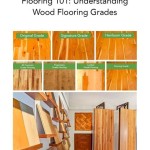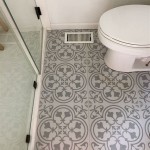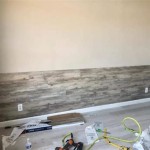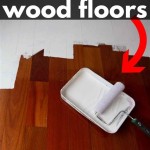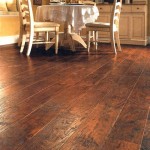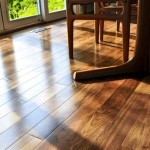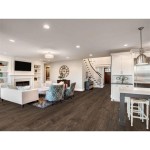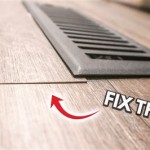Is Polypropylene Safe For Luxury Vinyl Plank Flooring?
Luxury Vinyl Plank (LVP) flooring has gained significant popularity due to its durability, aesthetic appeal, and relatively low cost compared to traditional hardwood or stone flooring. One component often used in the manufacturing process of LVP, particularly in its backing or underlayment, is polypropylene. The question of whether polypropylene is safe for use in LVP flooring is a valid concern for consumers, as they seek to create healthy and comfortable living spaces. This article examines the properties of polypropylene, its application in LVP flooring, and its potential impact on indoor air quality and overall safety.
Polypropylene (PP) is a thermoplastic polymer made from the polymerization of propylene. It belongs to the polyolefin family, which also includes polyethylene. Polypropylene is a versatile material known for its chemical resistance, high tensile strength, flexibility, and relatively low cost. These properties make it suitable for a wide range of applications, including packaging, textiles, automotive components, and, increasingly, flooring.
In LVP flooring, polypropylene can be used in several ways. It is often found in the backing layer, providing dimensional stability and moisture resistance. Some LVP products also incorporate a polypropylene foam or felt underlayment, which can offer additional cushioning and sound insulation. The presence of polypropylene in these components can contribute to the overall performance and longevity of the flooring.
Understanding Polypropylene's Composition and Properties
To assess the safety of polypropylene in LVP flooring, it is crucial to understand its inherent characteristics. Polypropylene is generally considered a stable and inert material. This means it is less likely to react with other substances or degrade over time, especially under normal indoor conditions. Its chemical resistance allows it to withstand exposure to common household chemicals, water, and other environmental factors without significant alteration.
One key advantage of polypropylene is its low toxicity profile. Unlike some other polymers, polypropylene does not contain harmful plasticizers like phthalates, which have been linked to potential health concerns. Phthalates are often added to plastics to increase their flexibility, but they can leach out of the material over time and potentially contaminate the environment or be absorbed by the body. The absence of phthalates in polypropylene contributes to its overall safety rating.
Furthermore, polypropylene is recyclable, which makes it a more environmentally friendly option compared to some other flooring materials. While the availability of recycling programs for polypropylene flooring may vary depending on location, the fact that the material can be recycled reduces its potential impact on landfills and promotes a more sustainable approach to flooring manufacturing and disposal.
Despite its generally favorable properties, it is important to acknowledge that the specific formulation of polypropylene used in LVP flooring can vary between manufacturers. Additives, such as stabilizers and pigments, may be incorporated to enhance the material's performance or appearance. The safety of these additives should also be considered when evaluating the overall safety of the flooring product. Reputable manufacturers typically adhere to industry standards and regulations regarding the use of additives to ensure that their products meet safety requirements.
Potential Concerns and Mitigation Strategies
While polypropylene itself is generally considered safe, there are potential concerns associated with its use in LVP flooring. One such concern is the potential for volatile organic compound (VOC) emissions. VOCs are organic chemicals that can evaporate at room temperature and potentially contribute to indoor air pollution. Although polypropylene is inherently low-VOC, the manufacturing processes or additives used in the production of LVP flooring containing polypropylene could introduce VOCs.
The impact of VOCs on human health can range from mild irritation (e.g., eye, nose, and throat irritation) to more serious long-term effects, depending on the concentration and duration of exposure. Individuals with pre-existing respiratory conditions or sensitivities may be more susceptible to the adverse effects of VOCs.
To mitigate the risk of VOC emissions, consumers should look for LVP flooring products that have been certified by reputable third-party organizations. Certifications such as FloorScore and GREENGUARD indicate that the product has been tested and meets stringent standards for VOC emissions. These certifications provide assurance that the flooring is safe for indoor use and will not significantly contribute to indoor air pollution.
Another potential concern is the possibility of off-gassing odors from the polypropylene or other components of the LVP flooring. Off-gassing refers to the release of chemicals from a material after it has been manufactured. While the odors are typically not harmful, they can be unpleasant and may cause temporary discomfort for some individuals. These odors usually dissipate over time as the flooring fully cures.
To minimize the risk of off-gassing odors, it is advisable to ventilate the room thoroughly after installing new LVP flooring. Opening windows and using fans can help to circulate the air and expedite the dissipation of any lingering odors. Allowing the flooring to acclimate to the room temperature and humidity before installation can also help to reduce off-gassing.
Furthermore, proper installation practices are crucial for ensuring the safety and performance of LVP flooring containing polypropylene. Following the manufacturer's instructions carefully can prevent issues such as excessive moisture exposure, which could potentially lead to mold growth or degradation of the flooring material. Using appropriate adhesives and underlayments, as recommended by the manufacturer, is also essential for maintaining the integrity of the flooring system.
Evaluating the Long-Term Safety and Durability of Polypropylene in LVP
The long-term safety and durability of polypropylene in LVP flooring are important considerations for consumers who are seeking a durable and safe flooring solution. Polypropylene is known for its resistance to wear and tear, making it a suitable material for high-traffic areas. Its ability to withstand impacts, scratches, and stains contributes to the longevity of LVP flooring.
However, the long-term performance of polypropylene can be affected by factors such as prolonged exposure to sunlight or extreme temperatures. Ultraviolet (UV) radiation from sunlight can cause the polypropylene to degrade over time, leading to discoloration or embrittlement. Similarly, exposure to high temperatures can soften the material and make it more susceptible to deformation.
To mitigate the effects of UV radiation and temperature fluctuations, manufacturers often incorporate stabilizers into the polypropylene formulation. These stabilizers help to protect the material from degradation and maintain its structural integrity over time. Consumers should look for LVP flooring products that are specifically designed for use in areas with high sunlight exposure or temperature variations.
Another factor that can influence the long-term safety of polypropylene in LVP flooring is its resistance to microbial growth. Polypropylene is inherently resistant to mold and mildew, which makes it a suitable material for areas that are prone to moisture, such as bathrooms and basements. However, the presence of other organic materials in the LVP flooring, such as wood fibers, can potentially support microbial growth if exposed to excessive moisture.
To prevent mold and mildew growth, it is important to maintain proper ventilation in rooms with LVP flooring and to promptly address any water leaks or spills. Using a dehumidifier can help to reduce humidity levels in damp environments. Regular cleaning of the flooring with appropriate cleaning products can also help to remove dirt and debris that could potentially support microbial growth. Selecting LVP products with antimicrobial treatments can provide an additional layer of protection against mold and mildew.
In conclusion, polypropylene, when used in LVP flooring, presents a generally safe option, especially when sourced from reputable manufacturers who adhere to industry standards and certifications. The avoidance of phthalates and the potential for recyclability further contribute to its appeal. However, vigilance regarding VOC emissions, proper ventilation during installation, and consistent maintenance are essential for ensuring a healthy and durable flooring solution.

Is Polypropylene Safe For Vinyl Plank Flooring Chemistry Everyone

Is Polypropylene Safe For Vinyl Floors Chemistry Everyone

What Rug Backing Is Safe For Vinyl Plank Flooring Detailed

Is Polypropylene Safe For Vinyl Floors Chemistry Everyone

What Rug Backing Is Safe For Vinyl Plank Flooring Detailed
Is Polypropylene Safe On Vinyl Floors A Comprehensive Guide
Is Polypropylene Safe On Vinyl Floors A Comprehensive Guide

Non Toxic Vinyl Plank Flooring Brands The Risks My Chemical Free House
Is Polypropylene Safe On Vinyl Floors A Comprehensive Guide

Is Polypropylene Safe For Vinyl Plank Flooring Chemistry Everyone
See Also
